- Bernard Preston homepage
- Harvesting Rainwater
- What Is Water Innovation
What is water innovation?
What is water innovation? It means putting on our thinking-caps and being challenged to grow out of our boots; that is not easy for complacent human beings. Already there is not enough in storage dams for all our needs.
In South Africa we say that "tomorrow is another day" but the issues are now so pressing that they demand that we no longer put off what simply must be considered with haste.
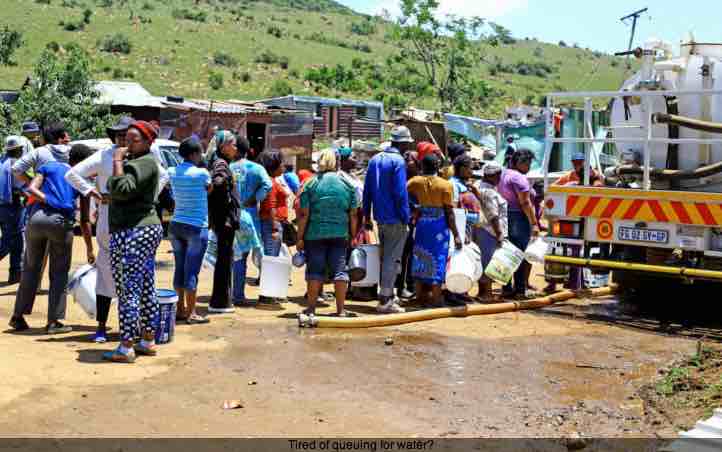
What makes it difficult is that there are unscrupulous people in government who are scoring from keeping unquestioning simple-folk in dependent serfdom; and other profiteering from trucking in water.
Of the top issues water has emerged as the biggest-priority. The systems across cities, towns and rural areas is failing; and we know it from regular cuts to steeply increasing tariffs.
- Daily Maverick, September, 2021.
What is desperately needed is technological, organisational and social innovation; the values of the so-called circular economy. No longer can we shrug our shoulders and leave it to the boffins; each and every one of us must get on board if we are to save the planet from the ravages of climate change.
Drought and storm damage are making the provision of clean-water increasingly beyond the capability of local authorities; pollution of our rivers and dams adds to the complexity.
This page was last updated by Dr Bernard Preston on 17th September, 2024.
Perhaps it is only when we have been forced to queue for drinking water or take thirty-second showers that we humans will begin to consider the alternatives; or collect the runoff for the toilet.
We desperately need to think out of the box, so to speak; and go beyond simply using less water and fixing leaks, important though these are.
Affordability needs to be considered too. Desalination plants are fine and dandy in a prosperous society but in South Africa the price tag is simply prohibitive; also they are greedy uses of electricity, after water the second-biggest gripe of the public.
Creating work
With the electrical utility Eskom in dire straits, the availability and cost of power makes desalination non-sustainable on a sufficiently large scale.
Creating work is another consideration. Technological developments like desalination require large amounts of foreign capital and electricity, but make no contribution to unemployment or reducing greenhouse gases from large coal-fired power stations; they must supply the energy to remove the salt.
Quality is another factor that needs to be faced. Eighty percent of South Africa's once potable water is now contaminated with plastic microbeads; and the ever-present threat of typhoid and cholera bacteria. The effluent from mines and sewerage plants that simply are no longer functional is devastating our rivers.
Clean drinking-water can no longer be taken for granted.
Even much bottled water is contaminated. The average person today in drinking about 5g of plastic per week; roughly the size of a credit-card.
midmar pollution
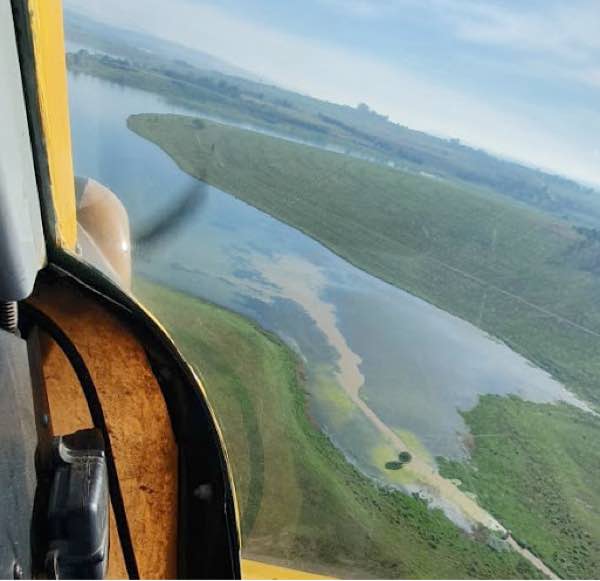
Midmar dam is where our piped water comes from; it used to be one of the cleanest sources in the world. Today it is regularly polluted due to the mismanagement of the sewerage-works from the local village of Mpophomeni. The stench could be smelled in our village of Hilton which is 20km away.
What is water innovation?
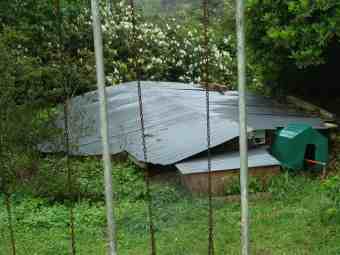
What is water innovation? It's desperately needed if our world is to survive. There is one domain that has yet to be seriously considered on a large-scale that fits all these requirements. Harvesting and storing rainfall at base; in every single home.
There are three-possibilities:
- Plastic tanks.
- Fibreglass tanks.
- Underground reservoirs.
Above-ground tanks have one great disadvantage; the water is warm and bacteria flourish. It is certainly not potable.
Plastic-tanks are less expensive than fibreglass but the former do not last; they are damaged by UV and easily destroyed by fire.
Fibreglass lasts indefinitely and can be repaired but the tanks are more expensive; and like plastic rely on foreign imports of raw-materials.
Which brings us to building our own underground reservoirs.
Underground reservoirs create work
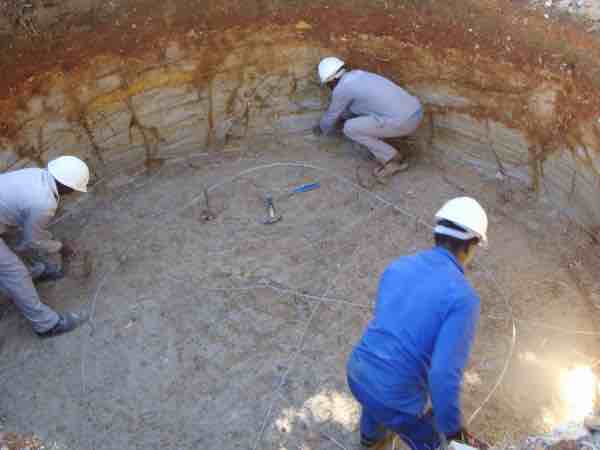
Underground reservoirs are a vital part of water innovation that has been missed, and they fit many of our criteria. Highly-skilled labour is not required, nor is massive capital, and they create work for people without jobs.
Three or four strong men could dig the hole in less than a week. Then a couple of bricklayers and plasterers can complete the job. The plumbing is very simple, and would be done at the end of the job in a day; an electrical pump is required, possibly solar-powered.
Underground reservoirs use locally available materials
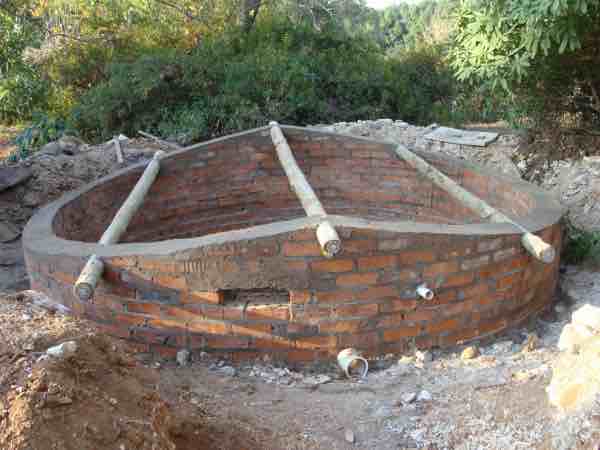
The use of locally available materials, instead of importing high-tech equipment is another important criterion of water innovation. Built of bricks and mortar, with three gum poles for a roofing structure, all the materials can be sourced from the local builders' merchant.
Locally-available roof cladding is easily and inexpensively accessible.
Underground reservoir water is relatively clean
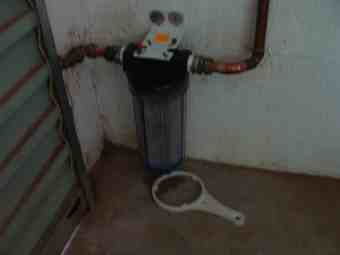
Clean is a relative word; humans have evolved able to handle small amounts of non-toxic material in their drinking water. No doubt the odd tadpole has been swallowed too.
What is needed is to keep out pathogens like E.Coli from fecal-material. They have been fingered as the source of the curli proteins in the brain that cause the neurodegenerative diseases like Alzheimer's.
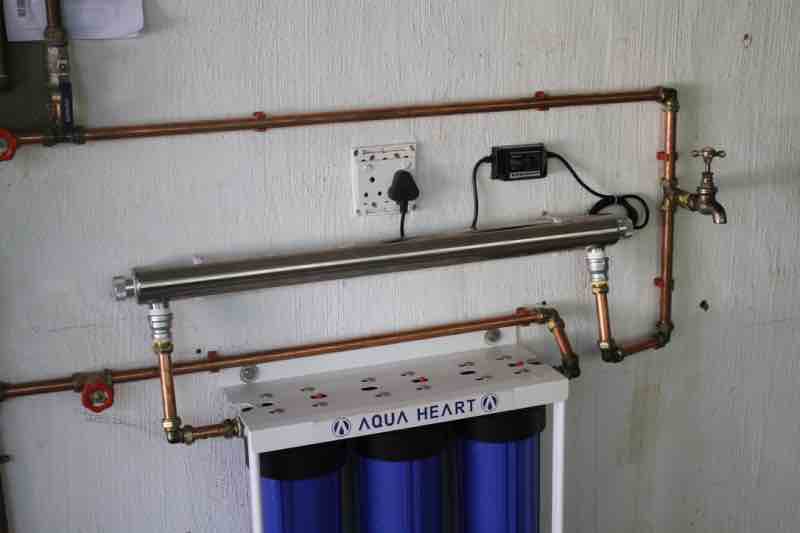
Water innovation should consider simple structures like sand-filters possibly but our own experience is that the rainwater harvested requires little cleaning.
But the gutters must be kept free of leaves and other detritus; and the reservoir emptied and washed-out annually. Again that creates work for unskilled people.
A simple sump, arrowed below collects most of the dust and dirt from the roof; water gravitates into the trap and then overflows into the reservoir through a coarse-filter to remove leaves.
Initially we used a filter to clean our the reservoir water before it was pumped into our home but it soon became clear that it was not required, dropped the pressure considerably and added an unnecessary expense.
Finally we upgraded to a much better filtration and sterilization system but I still question whether it is necessary; it was done simply for peace of mind and is probably an unnecessary expense.
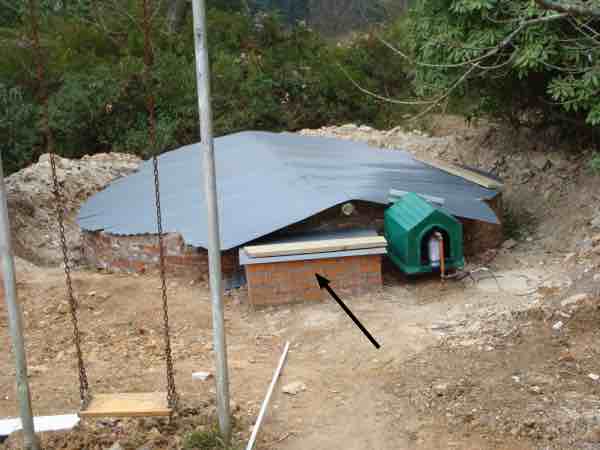
It is estimated that at most 8% of rainfall finds its way into large dams via our rivers. This water innovation reservoir would not make a dent on large-scale reticulation; rather there is zero loss from evaporation.
In addition it would contribute to preventing storm-water damage, by reducing runoff.
Grey water can still be channeled to gardens no matter which side of the bath vs shower debate you take.
Very small amounts of electricity are required to pump this water innovation reservoir; three solar-panels would suffice if there is no power from the grid. They can easily be turned and tilted manually to follow the sun.
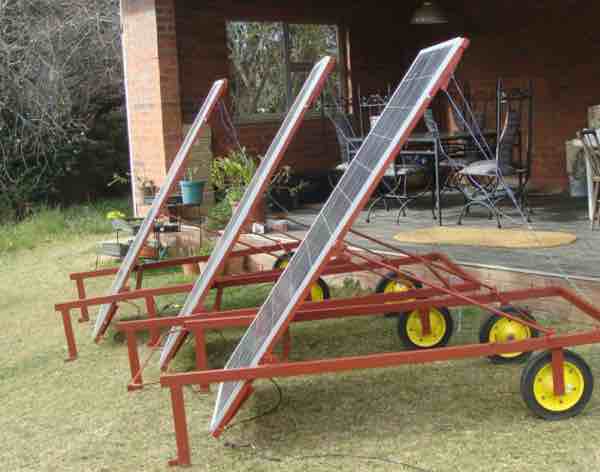
Oft times we need to go beyond water innovation and think about the provision of power too; on a larger scale, a solar generator could supply the home with electricity as well.
The carbon-footprint to provide water and electricity in the urban environment is greatly reduced by a little innovation.
In these two simple steps requiring no great cost and scant technological demand, water and energy can be provided; using in large measure locally-sourced materials.
There are zero carbon-emissions and we are making ourselves resilient to climate change and local government incompetence.
What is water innovation? This is generally considered a painful question beyond most of us; but our underground reservoir has proved relatively simple.
It has provided more than sufficient safe drinking water for our home and garden except twice in thirteen years in times of extreme drought.
What is water innovation?
So what is your water innovation? Are you on the side of those seeking to preserve what was once a pristine planet for our grandchildren, or those who could not give a stuff about the next generation? Let them sort themselves out.
In reality it is a spiritual and ethical reflection; mighty changes are happening and we are either pro or counter-revolutionaries. There is no place for fence-sitters. History will judge us, and I fear that our offspring are going to curse their forebears.
As a Christian I believe there is deeply spiritual imperative in going green; we have been entrusted with the care of our environment, of Creation and already our neglect of that sacred trust is turning to bite us. Far worse is to come if we do not start to think deeply about water innovation. Let us treat Mother Earth more kindly.
The problem of water scarcity in the world alas is not going to go away; in fact, it is set to get far worse. What is your innovative idea?
Newsletter
Our newsletter is entitled "create a cyan zone" at your home, preserving both yourself and Mother Earth for future generations; and the family too, of course. We promise not to spam you with daily emails promoting various products. You may get an occasional nudge to buy one of my books.
Here are the back issues.
- Lifestyle and ideal body weight
- What are ultra-processed foods?
- Investing in long-term health
- Diseases from plastic exposure
- Intensive lifestyle management for obesity has limited value
- A world largely devoid of Parkinson's Disease
- The impact of friendly bacteria in the tum on the prevention of cancer
- There's a hole in the bucket
- Everyone is talking about weight loss drugs
- Pull the sweet tooth
- If you suffer from heartburn plant a susu
- Refined maize meal and stunting
- Should agriculture and industry get priority for water and electricity?
- Nature is calling
- Mill your own flour
- Bake your own sourdough bread
- Microplastics from our water
- Alternative types of water storage
- Wear your clothes out
- Comfort foods
- Create a bee-friendly environment
- Go to bed slightly hungry
- Keep bees
- Blue zone folk are religious
- Reduce plastic waste
- Family is important
- What can go in compost?
- Grow broad beans for longevity
- Harvest and store sunshine
- Blue zone exercise
- Harvest and store your rainwater
- Create a cyan zone at your home
Did you find this page interesting? How about forwarding it to a friendly book or food junkie? Better still, a social media tick would help.
- Bernard Preston homepage
- Harvesting Rainwater
- What Is Water Innovation
Address:
56 Groenekloof Rd,
Hilton, KZN
South Africa
Website:
https://www.bernard-preston.com